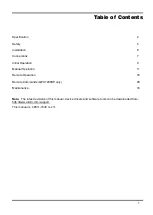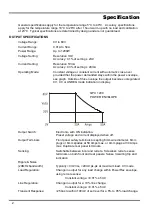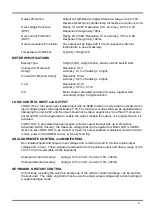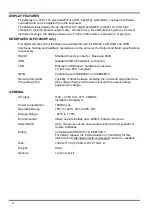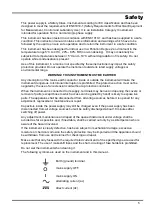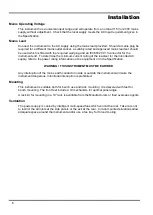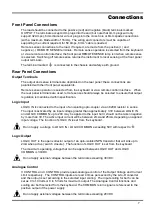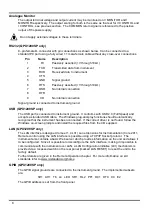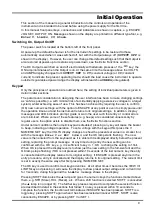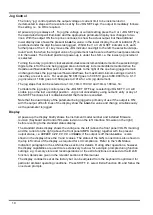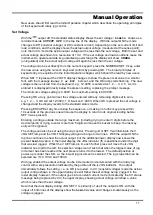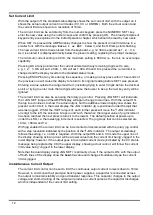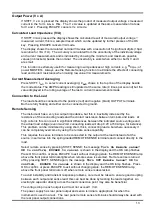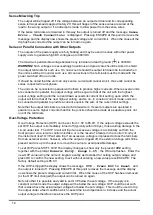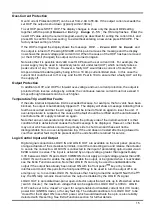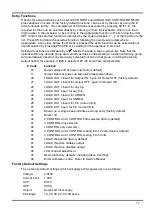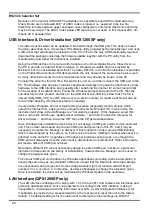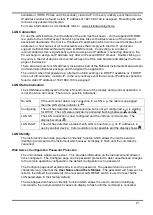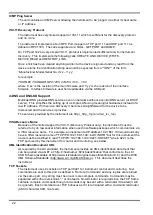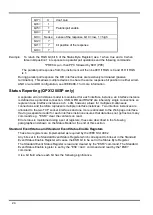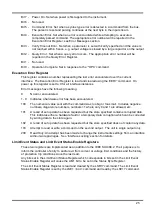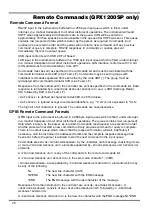
13
Output Power (V x A)
If SHIFT, V x A is pressed the display shows the product of measured output voltage x measured
current in the form
nn.n VA
. . The V x A value is updated at the same measurement rate as
for V and I. Pressing ESCAPE cancels V x A mode.
Calculated Load Impedance (V/A)
If SHIFT, V/A is pressed the display shows the calculated result of measured output voltage
÷
measured current; this is a sampled result which can be updated by further presses of the OK
key. Pressing ESCAPE cancels V/A mode.
The display shows the calculated nominal V/A value with a resolution of 5 significant digits (10µ
Ω
resolution for V/A <1
Ω
). The accuracy is calculated from the uncertainty of the individual voltage
and current measurements and is indicated by showing the minimum and maximum possible
values (in brackets) beside the nominal. The uncertainty is worst when either (or both) V and I
are small.
This function is extremely useful for measuring low impedances at high currents, e.g. R
DS(on)
of
power MOSFETs. Always use the Remote Sensing function to eliminate the effects of connecting
lead and contact resistance when making low value V/A measurements.
Current Measurement Averaging
Press SHIFT,
I
AVG
to select current averaging;
I
AVG
shows in the top line of the display beside
the mode status. The AMPS reading is still updated at the same rate (4 times per second) but the
value displayed is the rolling average of the last 4 current measurements made.
Connection to the Load
The load should be connected to the positive (red) and negative (black) OUTPUT terminals.
Both are fully floating and either can be connected to ground.
Remote Sensing
The instrument has a very low output impedance, but this is inevitably increased by the
resistance of the connecting leads and the contact resistance between terminals and leads. At
high currents this can result in significant differences between the indicated source voltage and
the actual load voltage (even two 2m
Ω
connecting leads will drop 0·2V at 50 Amps, for instance).
This problem can be minimised by using short, thick, connecting leads, but where necessary it
can be completely overcome by using the remote sense capability.
This requires the sense terminals to be connected to the output at the load instead of at the
source; insert wires into the spring-loaded REMOTE SENSE terminals and connect directly to the
load.
Select remote sense by pressing SHIFT, SENSE; the message
Turn On Remote sense?
OK to confirm, ESCAPE to cancel
is shown in the display and the OK lamp flashes.
Press OK to confirm or press ESCAPE to exit without changing state; the REMOTE SENSE lamp
above the front panel terminals lights when remote sense is selected. Remote sense is turned
off by pressing SHIFT, SENSE again; the message
Turn Off Remote Sense? OK to
confirm, ESCAPE to cancel
is shown in the display and the OK lamp flashes. Press
OK to confirm or press ESCAPE to exit without changing state; the REMOTE SENSE lamp
above the front panel terminals is off when remote sense is deselected.
To avoid instability and transient response problems, care must be taken to ensure good coupling
between each output and sense lead; this can best be done by twisting the leads together. An
electrolytic capacitor directly across the load connection point may also be beneficial.
The voltage drop in each output lead must not exceed 1 Volt.
The power supply has rear panel output and sense terminals, appropriate for when the
instrument is used in a rack. The rear panel remote sense terminals should always be used with
the rear panel output connections.


